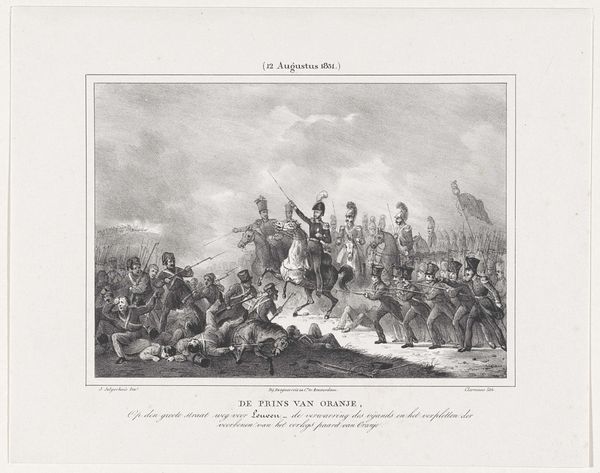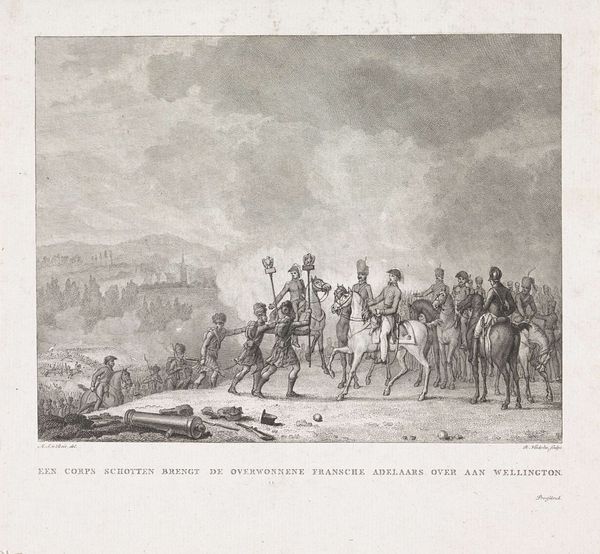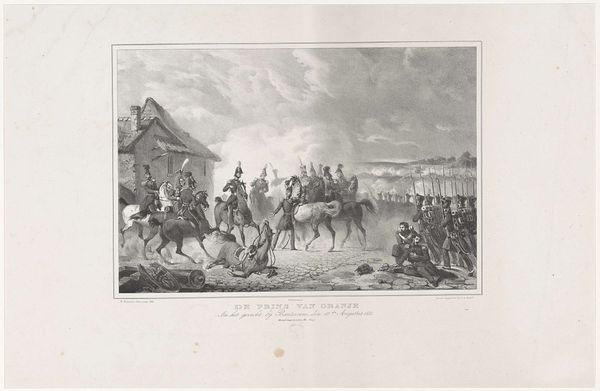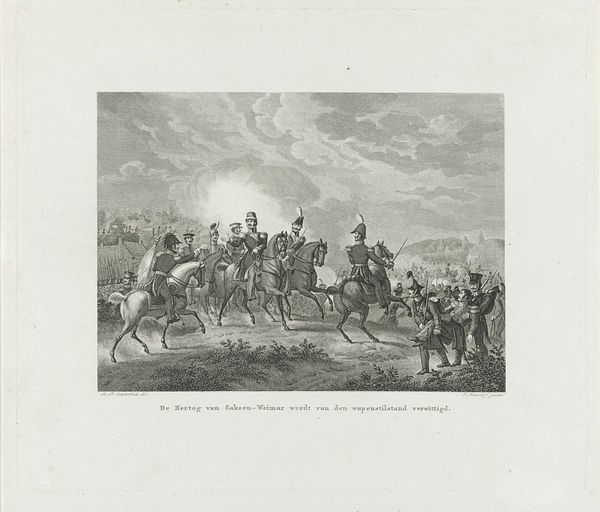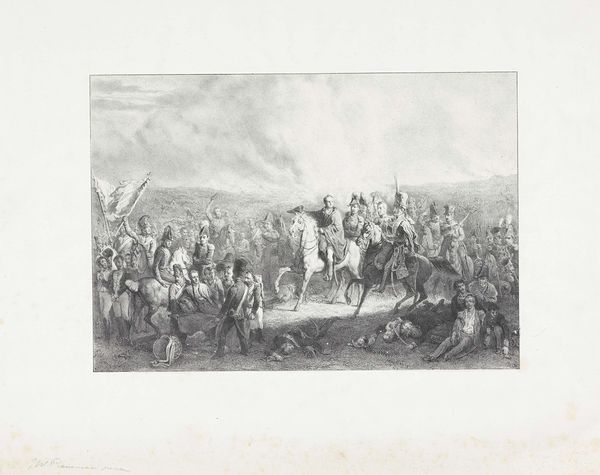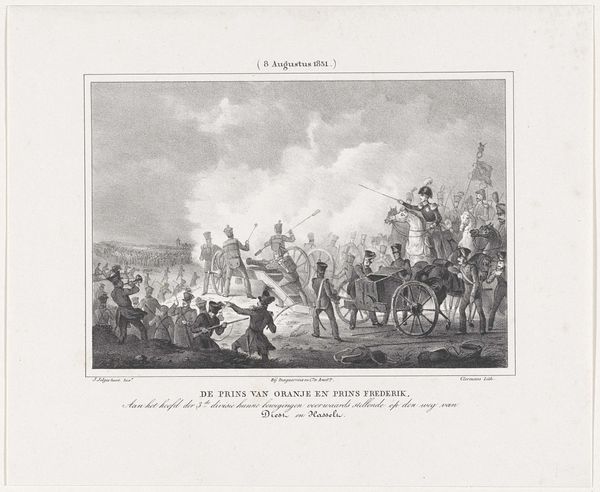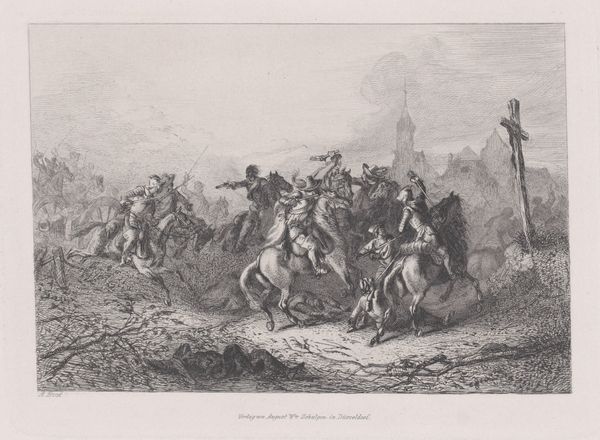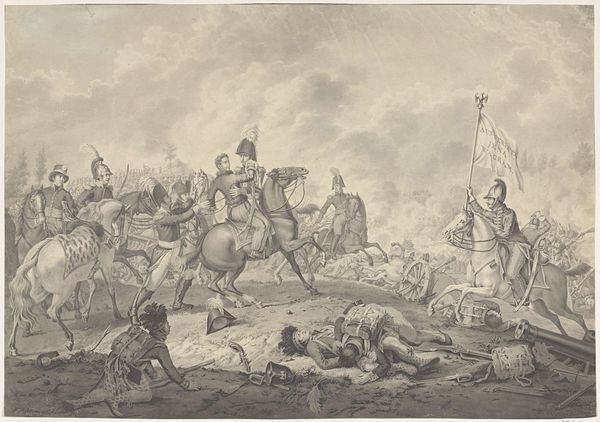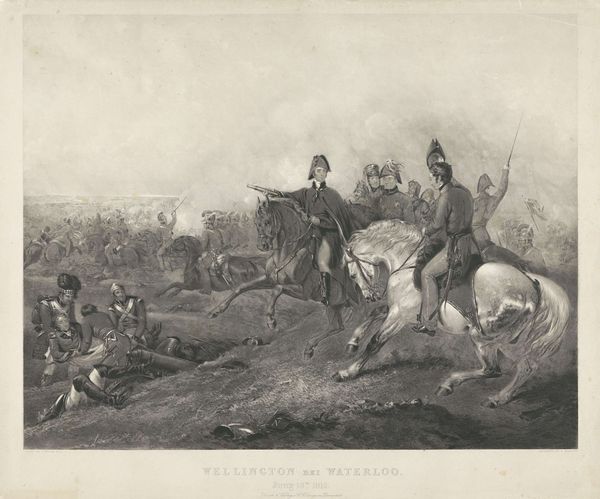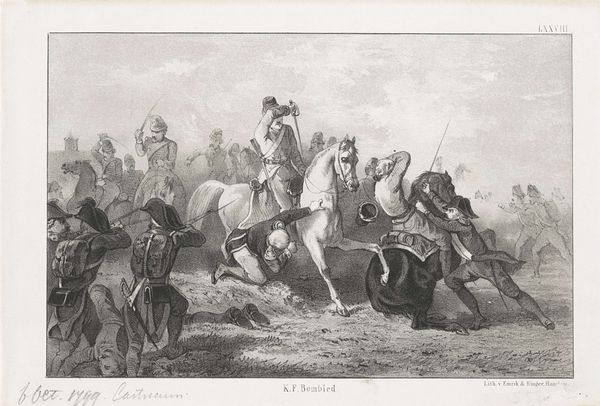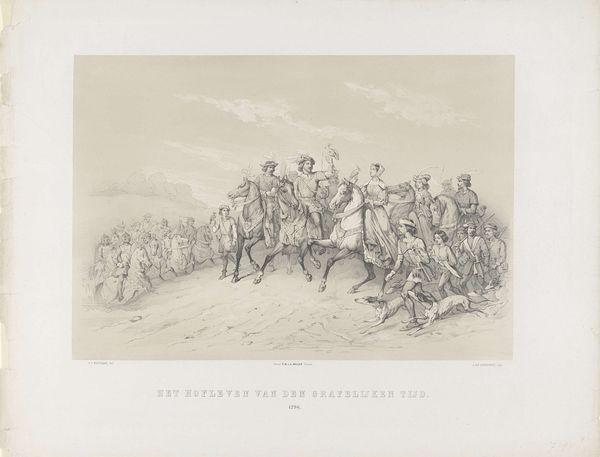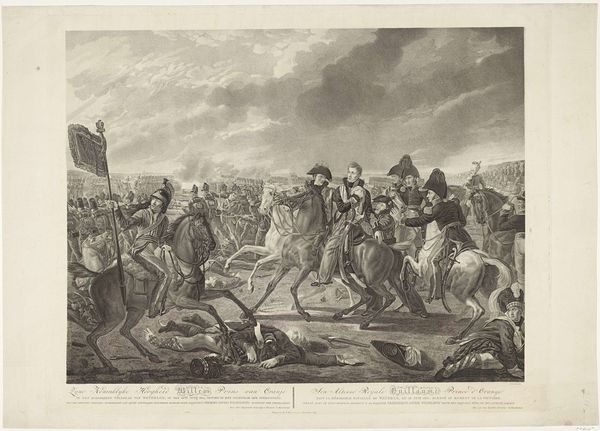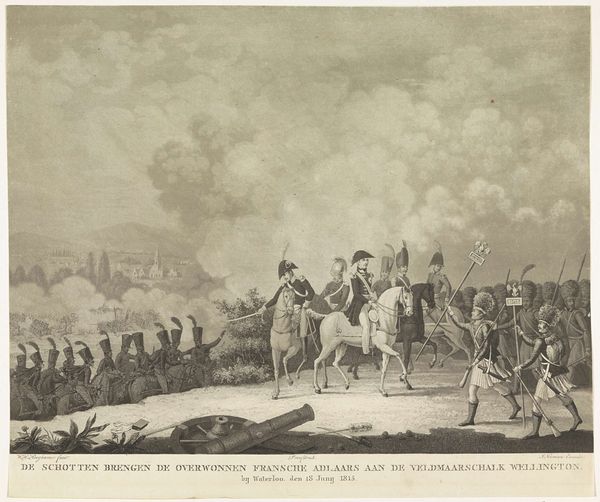
Bernhard hertog van Saxen-Weimar krijgt bevel de achtervolging te staken, 1831 1831
0:00
0:00
drawing, print, engraving
#
drawing
# print
#
landscape
#
figuration
#
romanticism
#
history-painting
#
engraving
Dimensions: height 413 mm, width 456 mm
Copyright: Rijks Museum: Open Domain
This print, made by Pieter Gerardus Bernhard in 1831, freezes a moment in time during a military campaign. It was created using a process called lithography, which, unlike traditional engraving, relies on the chemical repulsion of oil and water on a flat stone surface. The print's material qualities are crucial to its impact. The stark contrast between light and shadow, achieved through careful manipulation of the lithographic crayon, lends the scene a dramatic intensity. The flat surface of the stone allows for subtle gradations and tonal variations, capturing the textures of the soldiers' uniforms, the horses' coats, and the landscape. Lithography emerged alongside the rise of industrial capitalism, offering a relatively quick and inexpensive method for mass production. The efficient reproducibility of lithography democratized image-making, making art more accessible to a wider audience. This print reflects a shift in the relationship between art, labor, and consumption, where images could be disseminated on a scale previously unimaginable. Ultimately, this work invites us to consider the social and economic forces that shaped not only its subject matter but also the very means of its creation.
Comments
No comments
Be the first to comment and join the conversation on the ultimate creative platform.
